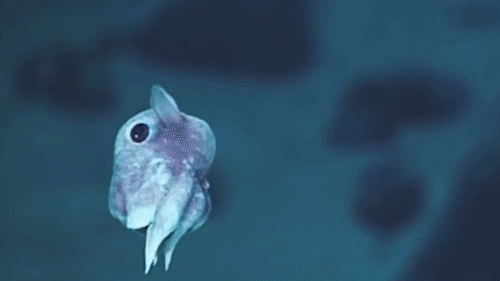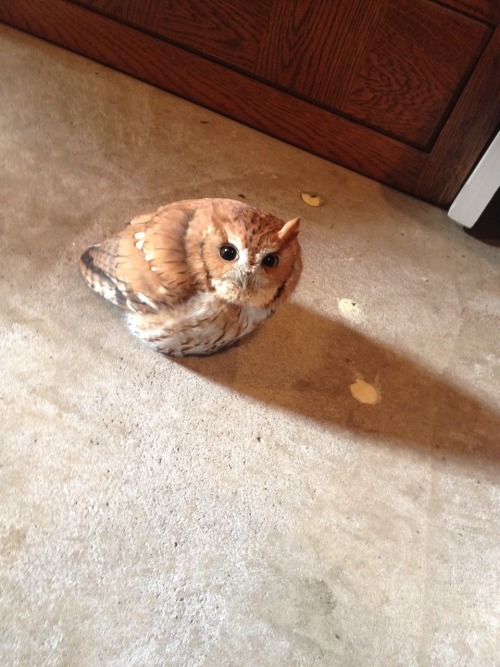Red-lined Bubble Snail (Bullina Lineata)



Red-lined bubble snail (Bullina lineata)
The red-lined bubble snail, is a species of sea snail, a marine gastropod mollusc in the family Bullinidae. This snail has a milky-white mantle with iridescent blue edges. There are small black eyes on the head between the head shield processes. The shell has a white background with horizontally spiraling red brown bands which are crossed by vertical bands in the same color. The length is 15 to 25 mm. This species occurs in the sublittoral zone of the Indo-Pacific from Japan to Australia and New Zealand.
photo credits: seaslugsofhawaii, Sylke Rohrlach, Richard Ling
More Posts from Llamaslikesciencetoo and Others



Meet the orchid mantis.
Orchid mantises—particularly juveniles—seem aptly named. They’re predominantly white with pink or yellow accents, similar to some orchids and other flowers, and their four hind legs are lobed, like petals. But if you search for an exact floral counterpart, as behavioral ecologist James O’Hanlon did, you probably won’t find one. “I spent forever looking for a flower that they look just like,” he says, to no avail.
As it turns out, rather than mimicking one floral species, the insect instead may embody a “generic or an average type of flower” in order to attract bees and other pollinating insects as prey.
What’s more, as far as O’Hanlon can tell, it’s the only animal on record that “takes on the guise of a whole flower blossom” as a predatory strategy.
Learn more here.

Mysterious Deep-Sea Animal Rediscovered after 116 Years
http://www.sci-news.com/biology/bathochordaeus-charon-04426.html

In this short video, augmented reality startup company Magic Leap used their cool technology to make 3D magic happen in a school gym.

I meant to say “neat” because it’s the first time I’ve seen a toad in person with its croak sac and I got excited
Too excited
Observation of the Week, 3/9/16

This Zombie Ant Fungus seen by jonathan_kolby in Cusuco National Park, Honduras is our Observation of the Week.
“I was walking down the trail, in pursuit of a frog, when this alien-like creature suddenly grabbed my attention out of the corner of my eye,” says National Geographic Explorer Jonathan Kolby. “This was the first time I had ever seen cordyceps fungus and didn’t know what it was at the time.” What he photographed (identified by Prof. David Hughes of Penn State), is likely the incredible fungus known as the Zombie Ant Fungus, which parasitizes its insect host and basically controls its brain. The host is often compelled to climb up the stem of a plant and uses its mandibles to latch onto it (known as the “death grip”). Fruiting bodies of the fungus eventually grow out of the host and release spores back into the forest. “After seeing this in person, I don’t think anyone would argue that nature is more amazing than the best sci-fi movie,” he says. “I now keep my eyes peeled every time I return to the forest to see if I can find another zombie insect! Just a few weeks ago, I found another one, this time of a moth (see below).”

(By the way, the BBC has incredible footage of an ant afflicted by Zombie Ant Fungus, you should definitely check it out.)
It is, however, another fungus which brings Jonathan to the rainforests of Honduras - Batrachochytrium dendrobatidis, commonly known as chytrid. It and the newly discovered B. salamandrivorans cause the disease chytridiomycosis, which is devastating amphibian populations around the world. The fungus does its damage by affecting the keratin-producing layer of skin in amphibians, disrupting electrolyte balance and chemical flow, “and ultimately kills the amphibian by causing a little froggy heart attack,” says Jonathan. For the past 10 years, Jonathan has specifically been working to combat the global amphibian extinction crisis and recently established the Honduras Amphibian Research & Conservation Center (http://www.FrogRescue.com), where they are working to protect three endangered species of frogs from chytrid. He’ll be finishing up his PhD at James Cook University in Australia and “now wants to help develop policies to protect biodiversity from emerging infectious diseases, reduce the spread of invasive species, and combat the illegal wildlife trade.”
Believing that photography and social media are important for raising awareness about these issues, Jonathan is active on many social media outlets (see below) one of which is iNaturalist. In addition to adding his own observations, he created an iNaturalist Project called Saving Salamanders with Citizen Science, where he’s asking folks to upload any photos they have of dead salamanders. “A new chytrid fungus disease [B. salamandrivorans] is beginning to spread around the world killing salamanders and we’re having a hard time tracking where it’s going,” he says. “With so many people outside looking at nature, anyone who snaps a picture of a dead salamander can provide valuable scientific data that might help us pinpoint where an outbreak is happening, so we can respond as quickly and efficiently as possible.” He invites anyone who’s interested in the issue to join, as he’ll be providing updates via the project; “iNaturalist has provided me with a way to communicate this message and raise awareness with a large audience of people who want to help protect nature.”
- by Tony Iwane
- You can follow Jonathan on Tumblr, Twitter, and Instagram, and check out his photos on SmugMug. Proceeds from SmugMug sales go to supporting his frog rescue operation at the Honduras Amphibian Rescue and Conservation Center.
- Here are links to two other cordyceps observations Jonathan has uploaded.
- Cordyceps fungus have even inspired video games! The acclaimed survival horror video game The Last of Us posits a world where a mutant strain of cordyceps affects humans, turning them into cannibalistic monsters.

An animated chart of 42 North American butterflies
Via Tabletop Whale


Canaries do not hate these spicy treats. In fact, they would be more than willing to eat jalapeno peppers. These are rich in vitamins A and C. / via


It’s a cute little thing though.
-
 mybookof-you reblogged this · 1 month ago
mybookof-you reblogged this · 1 month ago -
 avocadodeficit liked this · 6 months ago
avocadodeficit liked this · 6 months ago -
 chukundur reblogged this · 2 years ago
chukundur reblogged this · 2 years ago -
 darkinternalthoughts liked this · 2 years ago
darkinternalthoughts liked this · 2 years ago -
 the-gentleman-sockmonkey reblogged this · 2 years ago
the-gentleman-sockmonkey reblogged this · 2 years ago -
 the-gentleman-sockmonkey liked this · 2 years ago
the-gentleman-sockmonkey liked this · 2 years ago -
 bhavila liked this · 2 years ago
bhavila liked this · 2 years ago -
 lizarith liked this · 2 years ago
lizarith liked this · 2 years ago -
 starchild-x reblogged this · 2 years ago
starchild-x reblogged this · 2 years ago -
 thoughts-for-food liked this · 2 years ago
thoughts-for-food liked this · 2 years ago -
 urdnotthegreat liked this · 2 years ago
urdnotthegreat liked this · 2 years ago -
 itsthatbeech liked this · 2 years ago
itsthatbeech liked this · 2 years ago -
 thebirdtm liked this · 2 years ago
thebirdtm liked this · 2 years ago -
 disableddeinosaur liked this · 2 years ago
disableddeinosaur liked this · 2 years ago -
 espia1-blog liked this · 2 years ago
espia1-blog liked this · 2 years ago -
 captain-aaaaaaa liked this · 2 years ago
captain-aaaaaaa liked this · 2 years ago -
 dga-fl reblogged this · 2 years ago
dga-fl reblogged this · 2 years ago -
 corin-tuckers-left-one reblogged this · 2 years ago
corin-tuckers-left-one reblogged this · 2 years ago -
 corin-tuckers-left-one liked this · 2 years ago
corin-tuckers-left-one liked this · 2 years ago -
 relatablepicturesofgarnet liked this · 2 years ago
relatablepicturesofgarnet liked this · 2 years ago -
 avpd-will-lose liked this · 2 years ago
avpd-will-lose liked this · 2 years ago -
 collapsiblebrain reblogged this · 2 years ago
collapsiblebrain reblogged this · 2 years ago -
 chukundur liked this · 2 years ago
chukundur liked this · 2 years ago -
 the-foolish-maker-of-worlds liked this · 2 years ago
the-foolish-maker-of-worlds liked this · 2 years ago -
 symbiotic-science reblogged this · 2 years ago
symbiotic-science reblogged this · 2 years ago -
 zeroatthebone reblogged this · 2 years ago
zeroatthebone reblogged this · 2 years ago -
 notsotiredramblings liked this · 2 years ago
notsotiredramblings liked this · 2 years ago -
 pinselwurm reblogged this · 2 years ago
pinselwurm reblogged this · 2 years ago -
 train2000kmhgoer liked this · 2 years ago
train2000kmhgoer liked this · 2 years ago -
 scheming-pangolin reblogged this · 2 years ago
scheming-pangolin reblogged this · 2 years ago -
 hoshi-ni-negai-wo liked this · 2 years ago
hoshi-ni-negai-wo liked this · 2 years ago -
 moss-foot liked this · 2 years ago
moss-foot liked this · 2 years ago -
 unusualperidot liked this · 2 years ago
unusualperidot liked this · 2 years ago -
 sodclod reblogged this · 2 years ago
sodclod reblogged this · 2 years ago -
 strawberriloveli reblogged this · 2 years ago
strawberriloveli reblogged this · 2 years ago -
 jstorarticle liked this · 2 years ago
jstorarticle liked this · 2 years ago -
 sezerzeppeli liked this · 2 years ago
sezerzeppeli liked this · 2 years ago -
 inasociety liked this · 2 years ago
inasociety liked this · 2 years ago
Mainly interested in ecology, but also the entirety of science.
179 posts